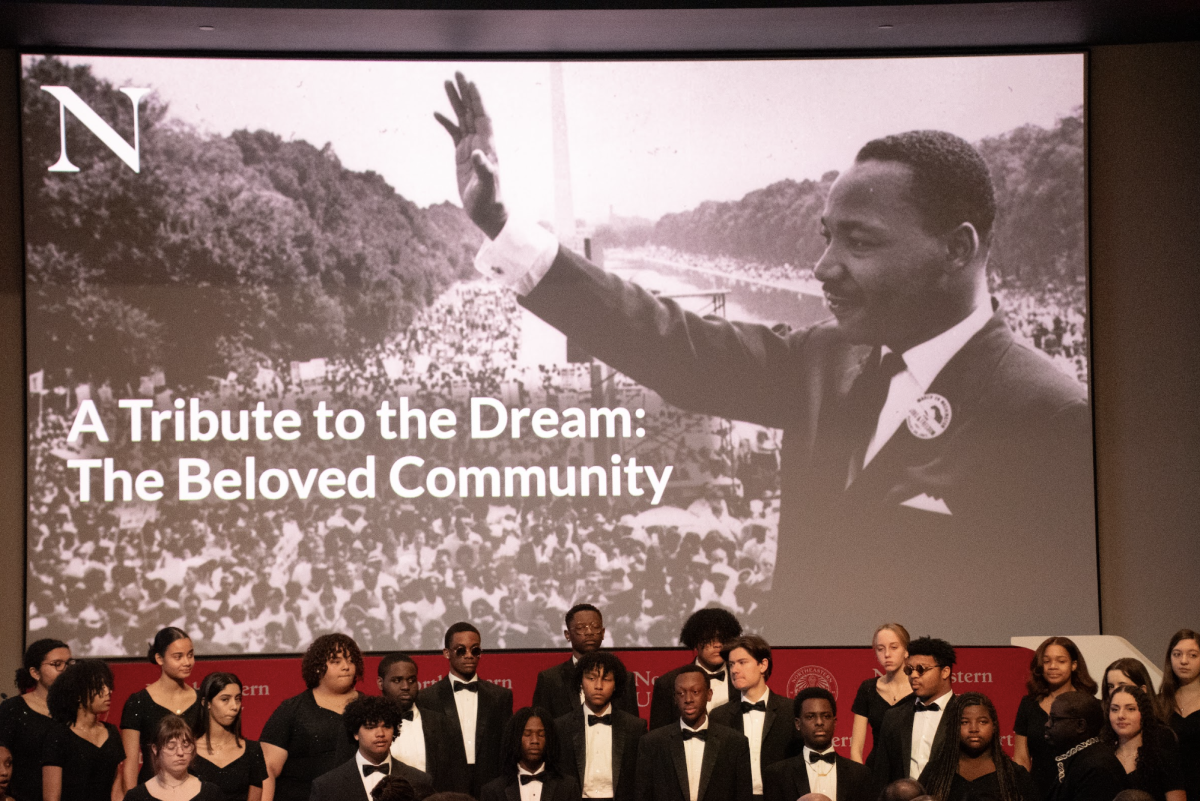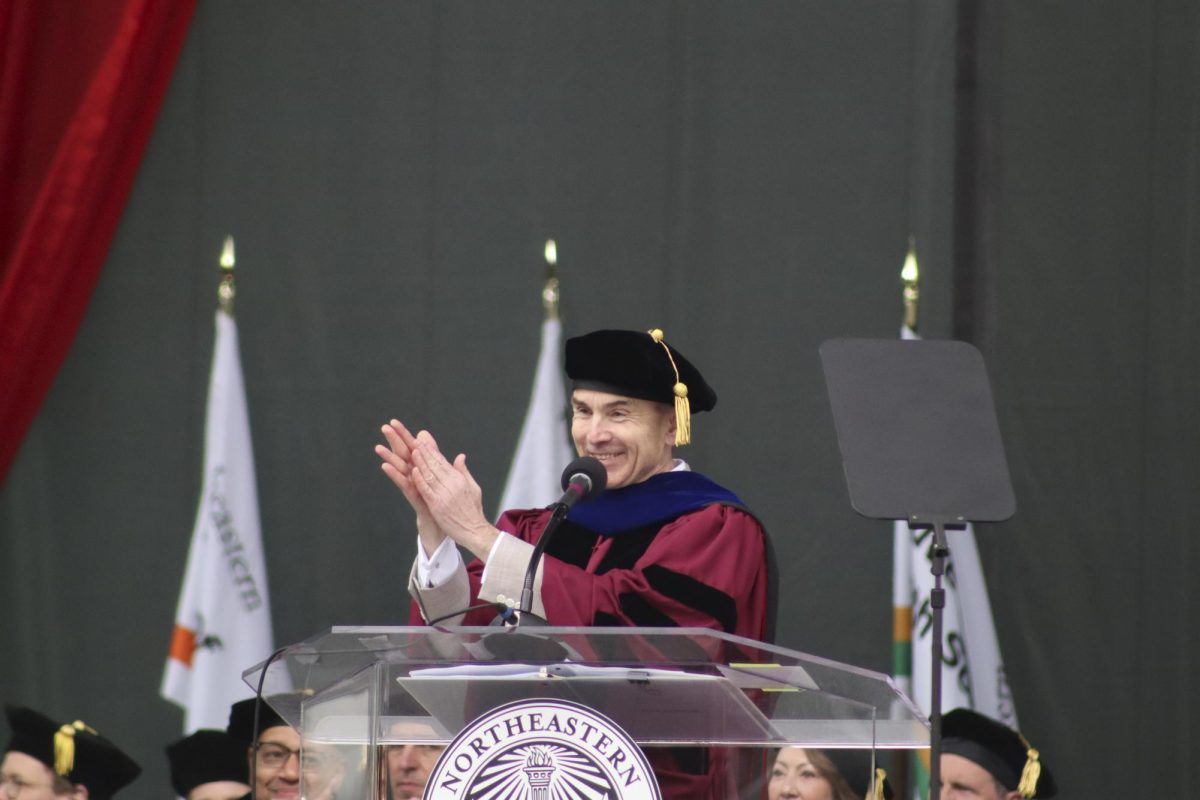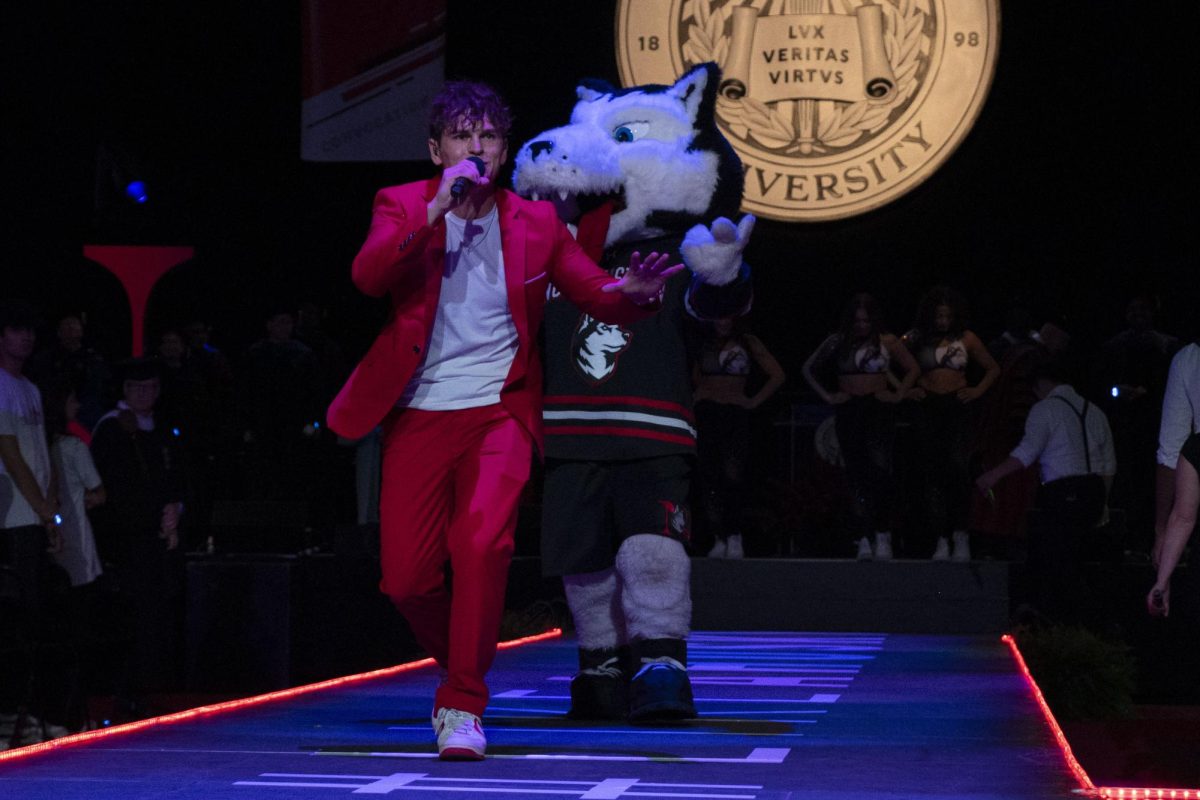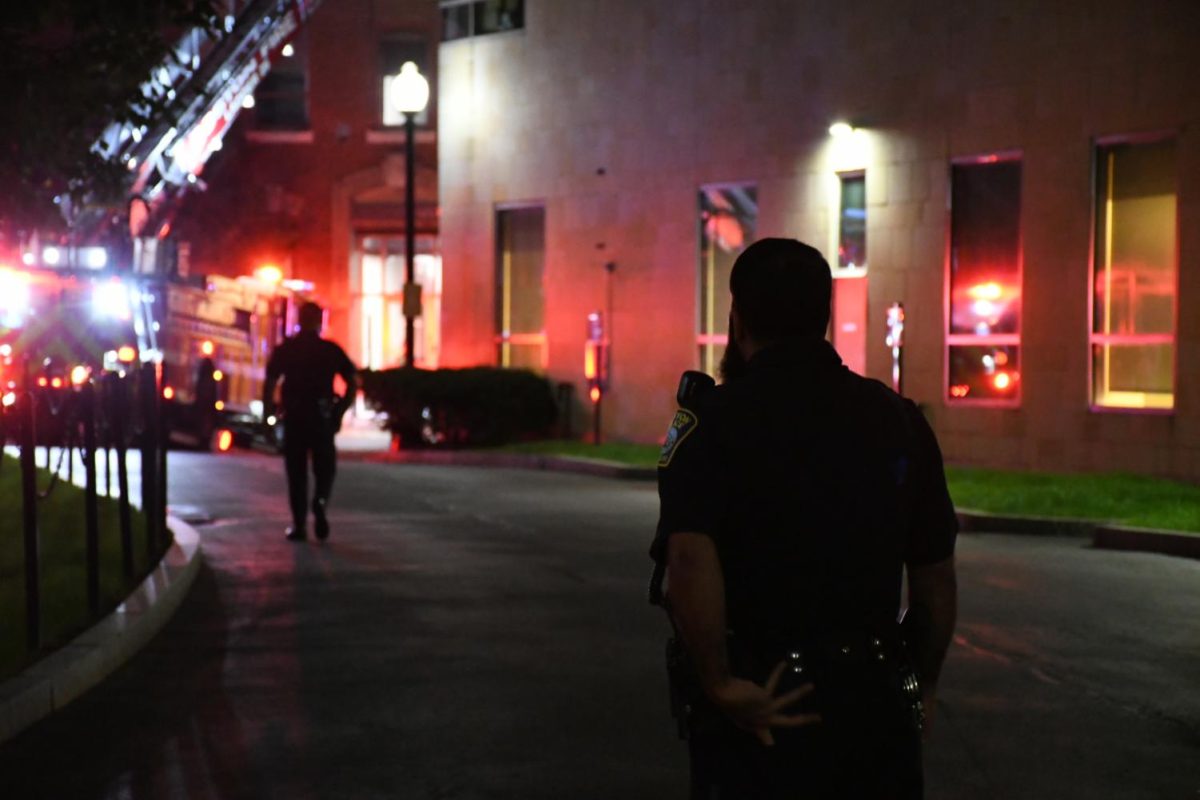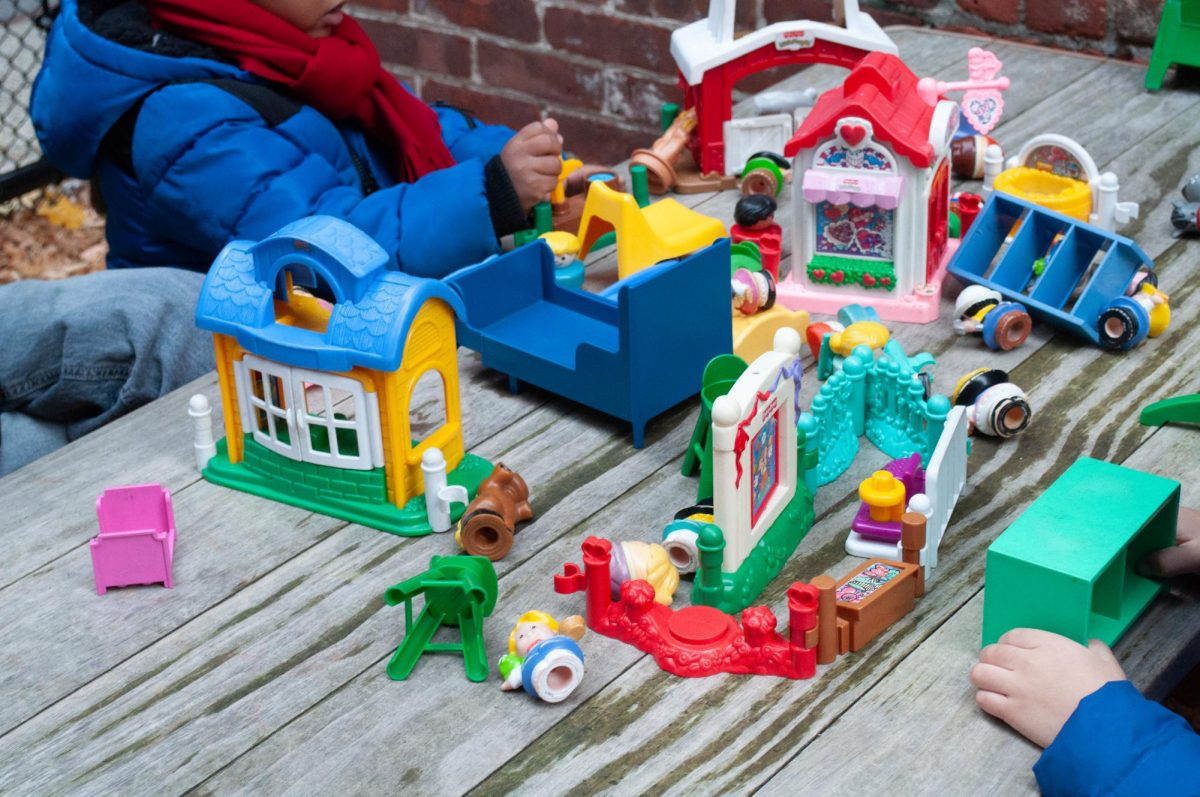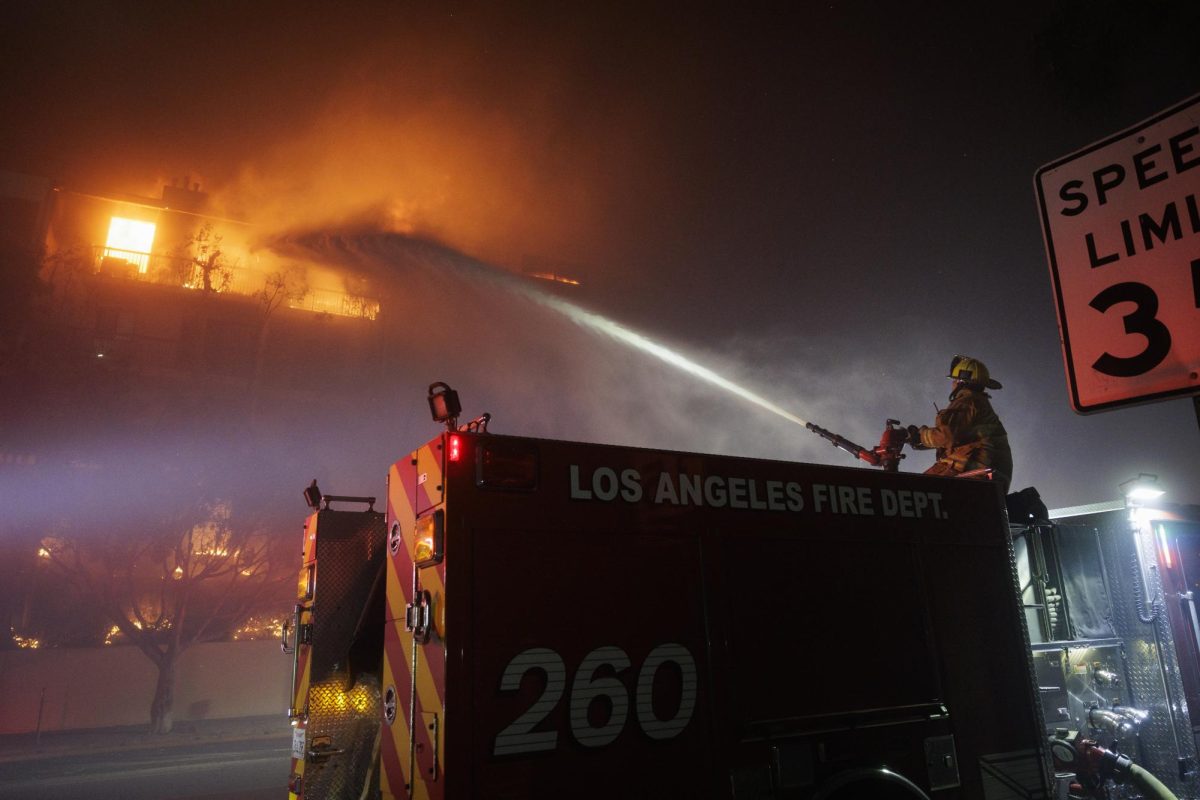By Patrick McHugh, News Staff
Players raised helmets to the sky as the clock ticked down on the Parsons Field scoreboard. The Northeastern football team would soon rush the field in celebration as fans cheered, some even uncorking champagne bottles in the stands. On Nov. 23, 2002, the Huskies defeated James Madison 41-10 in dominating fashion. The win was NU’s 10th of the season and clinched the school’s first-ever Atlantic-10 conference championship. A week later, the school would make its first appearance in the Division 1-AA playoffs.
Fast-forward seven years to the day. On Nov. 23, 2009, Northeastern Athletics Director Peter Roby stepped up to the microphone inside newly-renovated Matthews Arena and announced Northeastern’s decision to discontinue its football program immediately, citing an initiative to invest in ‘signature strengths.’
‘It was my determination that it was in the best long-term interest of the institution to make that difficult decision,’ Roby said during the press conference.
In the seven years since the 2002 conference title, a lot happened to turn the fortunes of the football program in the wrong direction. Head coach Don Brown, who led the Huskies to the conference crown, resigned as NU coach after an 8-4 season in 2003 and became the University of Massachusetts-Amherst head coach. Brown’s departure led to a lawsuit by Northeastern against UMass in contention that Brown breached his contract by negotiation with the Minutemen without getting approval from NU first. Brown was suspended from coaching for three games at the beginning of 2004, and UMass was ordered to pay Northeastern $150,000 in damages. Rocky Hager replaced Brown in 2004 and finished with a six-year record of 20-47.
Another factor was the move from the America East conference to the Colonial Athletic Association (CAA) in 2005. Although the competition on the football field remained the same, sports besides ice hockey had increased travel costs due to playing conference games in areas such as Virginia, North Carolina, and Maryland instead of only in New England. This meant new financial burdens for the Athletic Department.
Finally, the failure to get an on-campus stadium plan approved by the City of Boston prevented the Huskies from improving upon the amenities of Parsons Field, which is more than 70 years old and is more than a mile away from the heart of the campus. Attendance for home games at Parsons Field paled in comparison to that of other CAA schools. The average attendance for the other 11 CAA schools was 9,339 per home game, with Northeastern’s stalled at 1,596.
Despite its recent turmoil, there were some that lived for NU football games.
‘It brought a lot of us a lot of pleasure on Saturdays,’ said Northeastern Associate Athletics Director of Communication Jack Grinold.
Grinold knows more about the Northeastern football program than anyone. Grinold has seen 478 NU football contests in his life, nearly 50 seasons worth of games. Since becoming a sports information director for the Huskies’ athletic programs in 1962, Grinold has been present both home and away to see the squad take the field. He had seen 464 games in a row until illness prevented him from traveling to some games in 2008.
Though the overall record was nothing special ‘- the program finishes with a 289-364-17 mark in 74 seasons of play ‘- Grinold said it had a place in the New England sports landscape.
‘I think it fit in very well,’ Grinold said. ‘If you take away BC [Boston College], we played at the highest level of New England [college] football.’
The Northeastern football program began 76 years ago when the first Huskies squad took the field Oct. 10, 1933 and suffered a 19-6 defeat to St. Anselm’s. A week later, NU achieved its first-ever gridiron victory, a 9-0 win at St. Michael’s Oct. 14. Two years later, the 1935 team went 5-0-3 to complete an undefeated season, which included a 37-7 win over Alfred in the first night game in New England history on Oct. 4. From 1943-1945, Northeastern did not play football because of World War II. In 1951, the Huskies again went undefeated by going 6-0-1.
1963 saw the program’s one and only bowl game appearance. The team went 8-0 in the regular season and was invited to play against East Carolina in the Eastern Bowl in Allentown, Penn. Dec. 14. At the time, Division 1 football was not split into separate bowl and non-bowl subdivisions, so this became Northeastern’s lone bowl game, which ended in a 27-6 defeat.
‘It was pretty exciting, although it was cold as hell that day, freezing,’ Grinold said of the setting. Although NU lost, Grinold was quick to point out the Huskies were without two important players, fullback Bob Cappadona and tailback George Greenidge, who had to sit out due to NCAA transfer regulations.
Grinold also recalled the 1967 team, which went 7-1, which Grinold said is ‘probably the best team that Northeastern ever produced.’ Both the 1963 and 1967 teams were coached by Joe Zabilski, whom Grinold refered to as ‘Father Football.’
Zabilski is one of many Northeastern figures who stands out. Others include fullback ‘Century’ Sid Watson (1951-54), Cappadona (1963-65), tight end Dan Ross (1975-1978), defensive end Keith Willis (1977-1981), defensive end Sean Jones (1980-83), and defensive lineman Darin Jordan (1984-87) to name a few.
Several Husky players went on to enjoy careers in the NFL. Nine players in NU history were drafted into the league, others signing on with teams later on. Cappadona was drafted by the Boston Patriots in 1966 and was the team’s Rookie of the Year. Ross was drafted by the Cincinnati Bengals in 1979 and went on to set a Super Bowl record for catches with 11 on Jan. 24, 1982, a game in which Ross scored two touchdowns. Ross was also inducted into the College Football Hall of Fame in 2004, Northeastern’s only member in the hall. Willis and Jones enjoyed 10 and 13-year careers respectively, with Jones winning a Super Bowl with the Packers in 1997.
Between 1969 and 2001 the team produced just seven winning seasons, until the 2002 and 2003 consecutive winning seasons, the last two in program history. Although the final years of Northeastern football were not illustrious, there were several memorable games. On Nov. 15, 1997, senior quarterback Jim Murphy threw a touchdown pass to freshman receiver Dave Klemic as time expired to give NU a 23-17 win over Maine, in a game dubbed as ‘Murphy’s Miracle.’ On Oct. 26, 2006, the Huskies converted on a two-point conversion in overtime to defeat New Hampshire 36-35 on Homecoming. The following year on Nov. 3, the Huskies pounded the Wildcats in Durham, N.H., 31-13, a game in which senior running back Maurice Murray carried the ball 55 times and NU controlled the clock for over 48 minutes.
All that is left are memories now as 74 years of Huskies football comes to a close. For Grinold and others, life without the program will be unfamiliar.
‘I just don’t know what that day is going to feel like,’ Grinold said of his first fall Saturday without Northeastern football. ‘It is simply going to be very hollow.’


